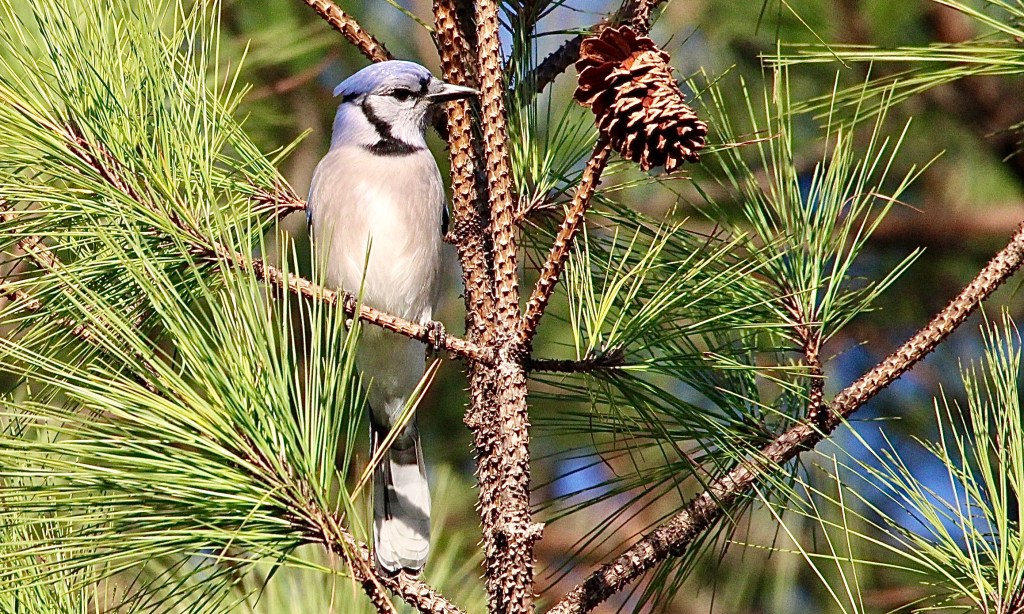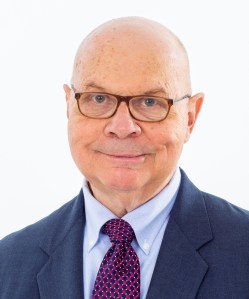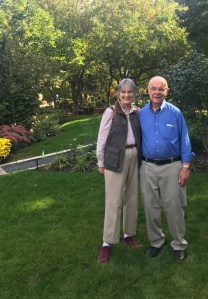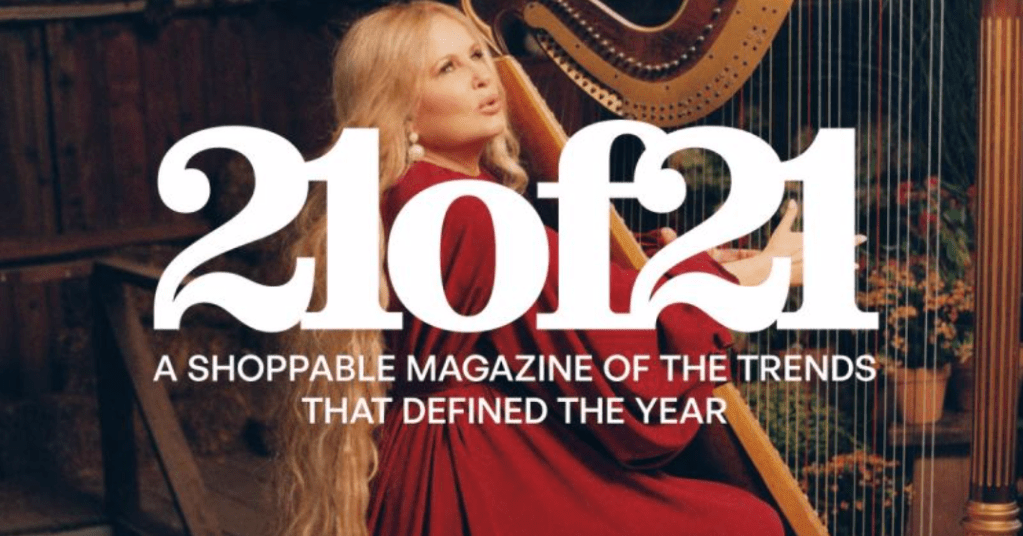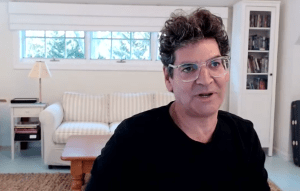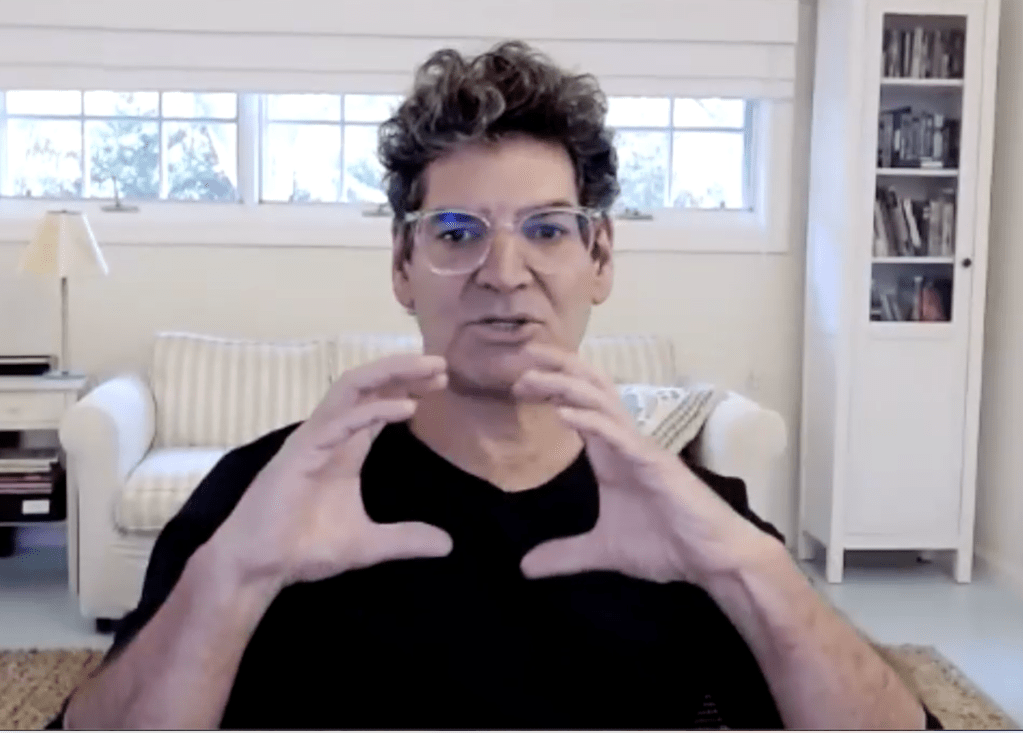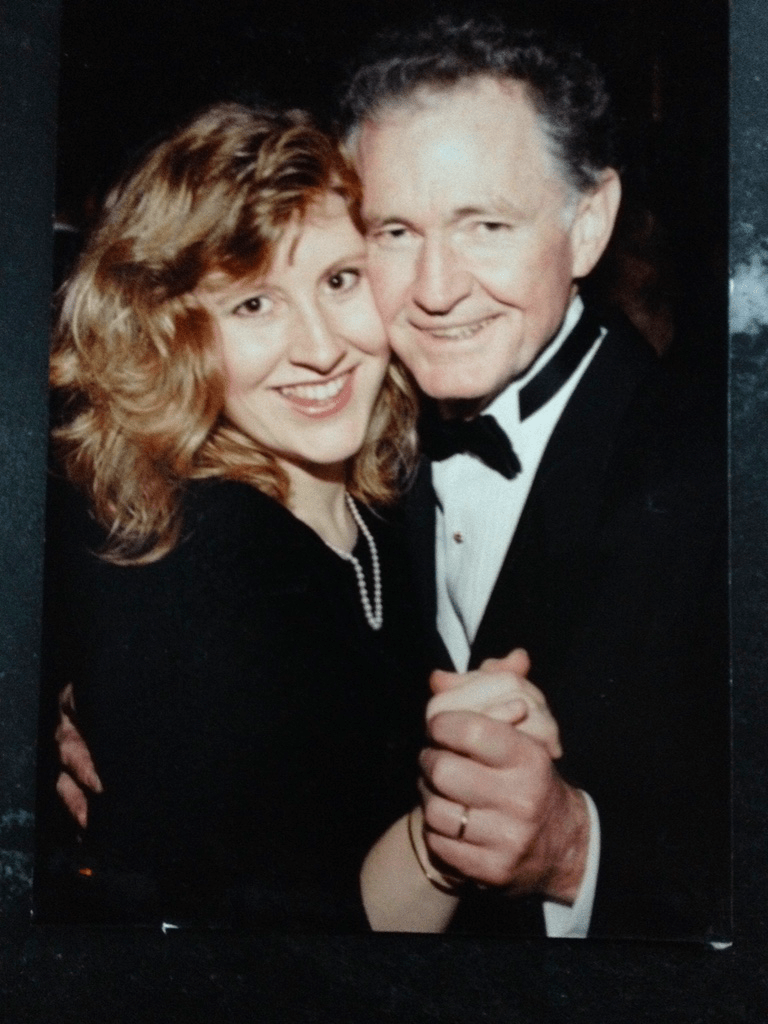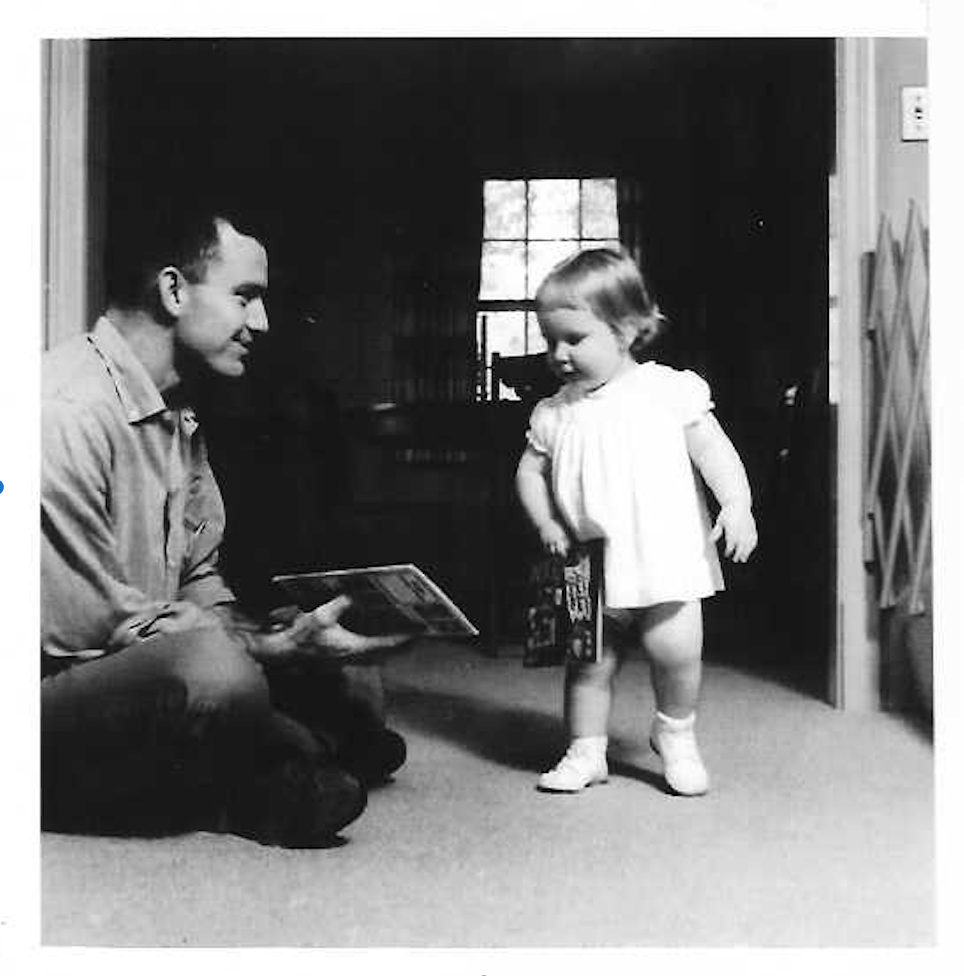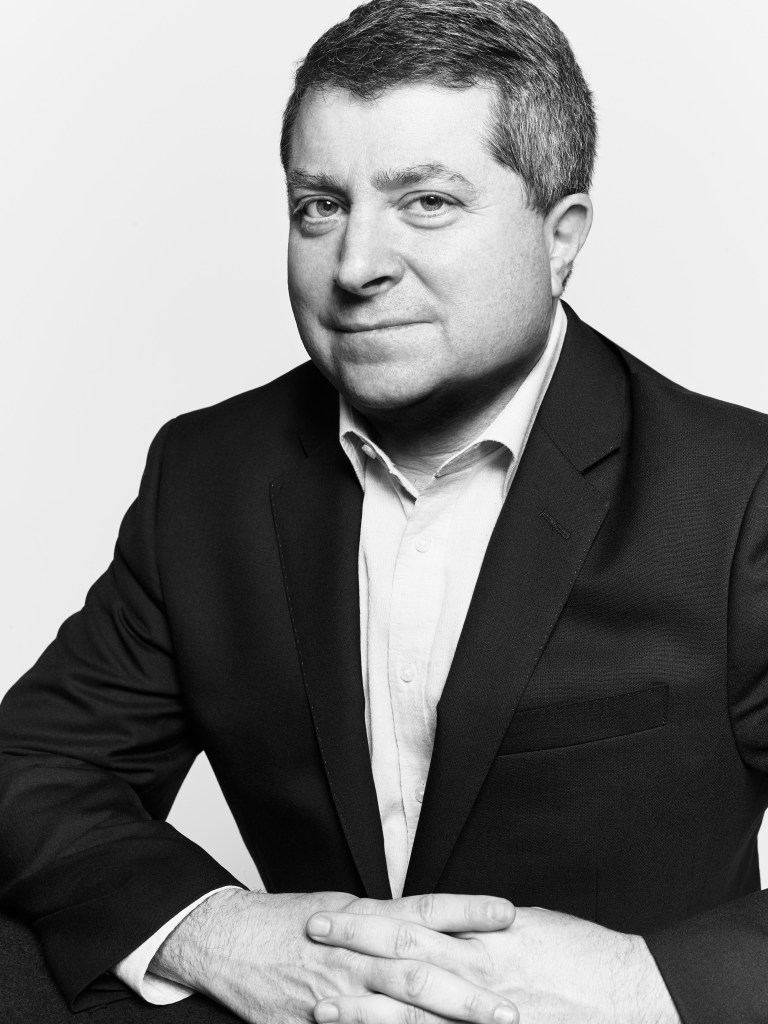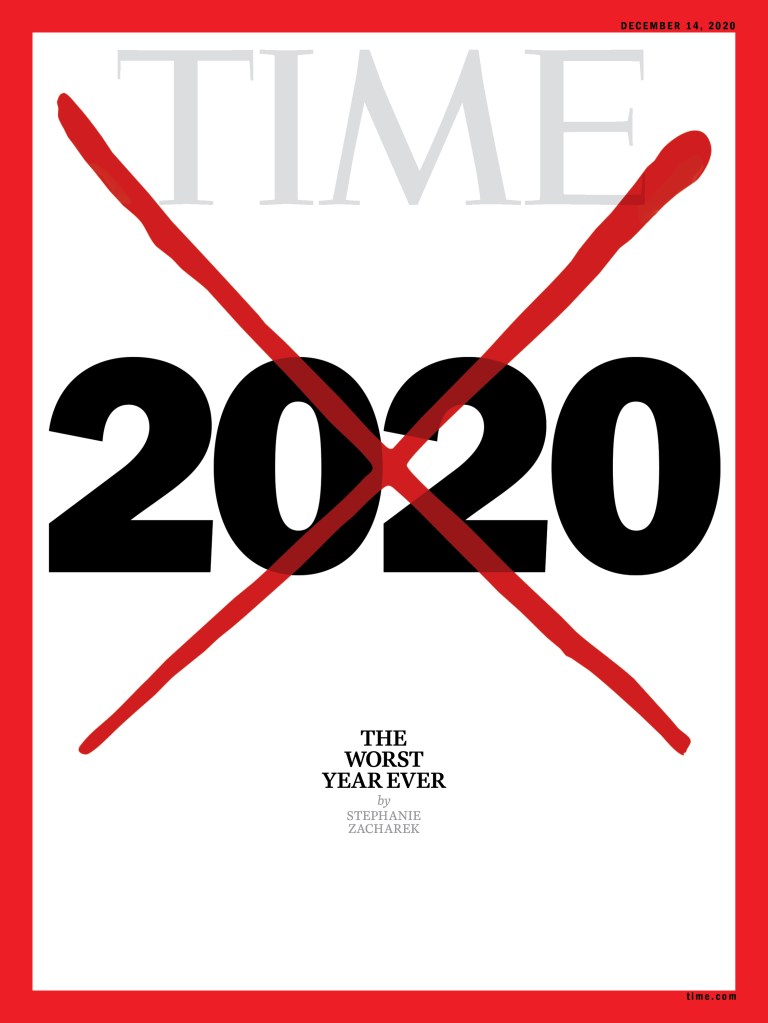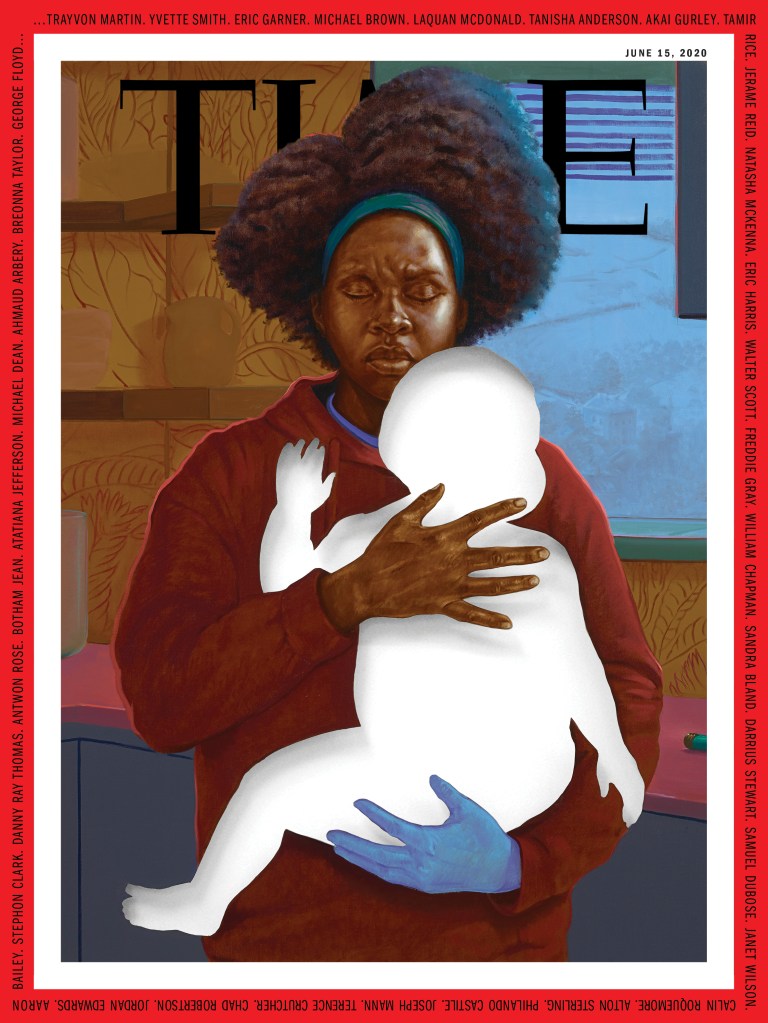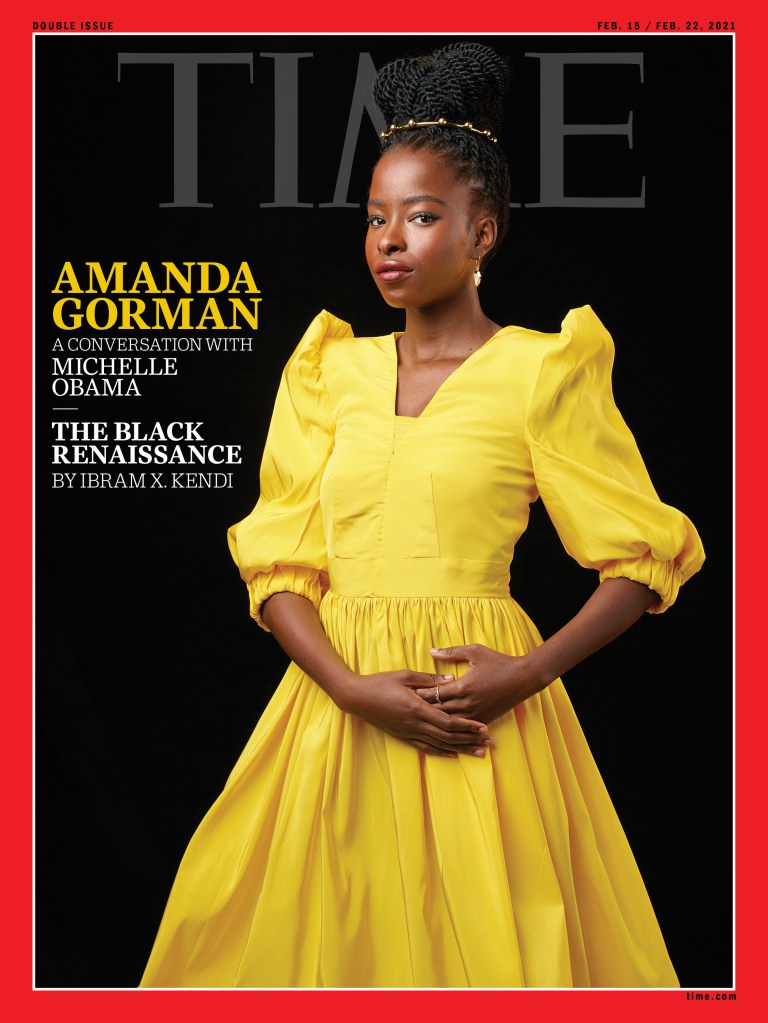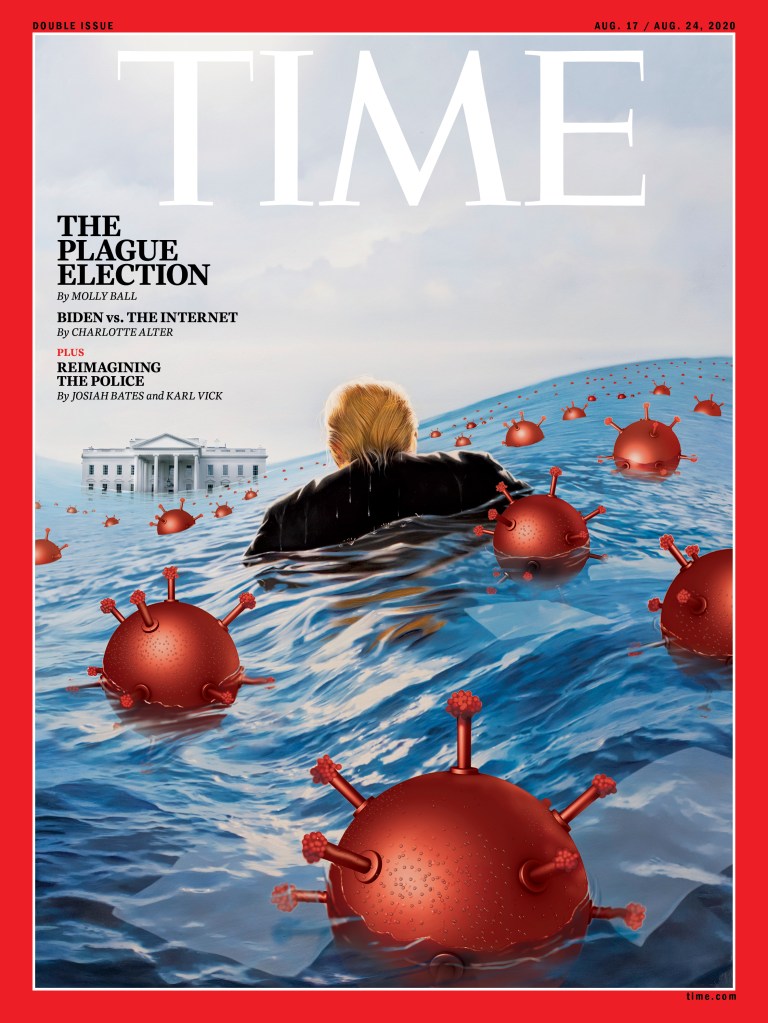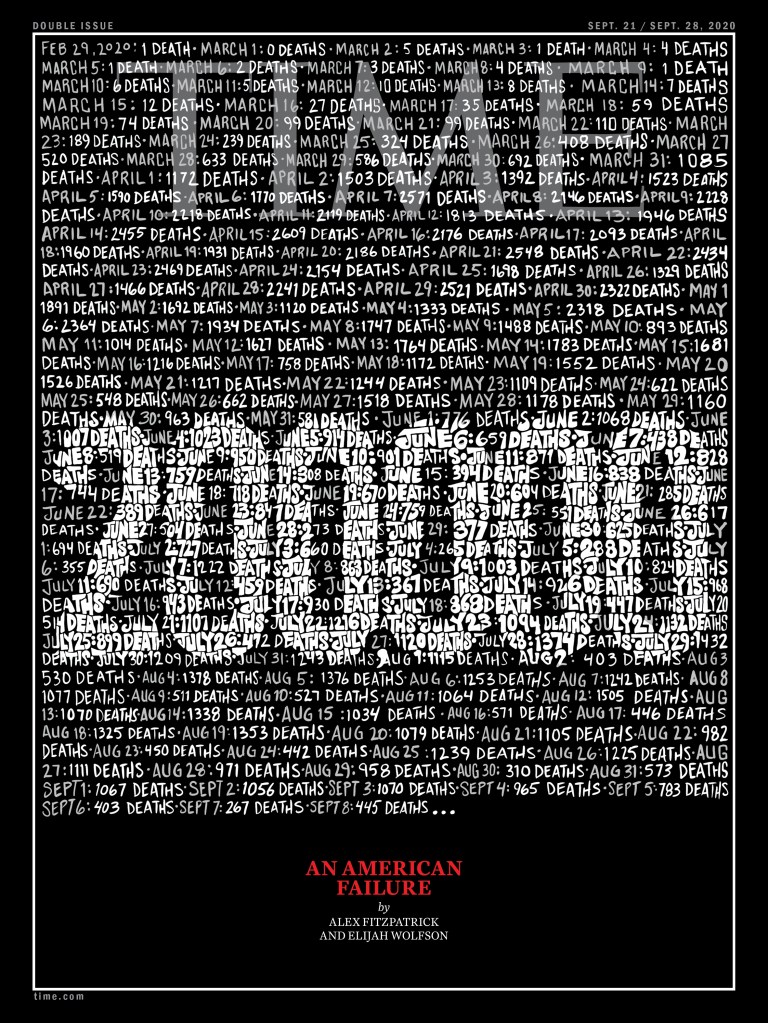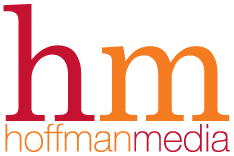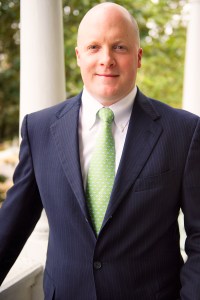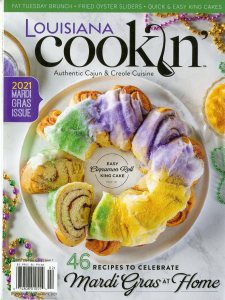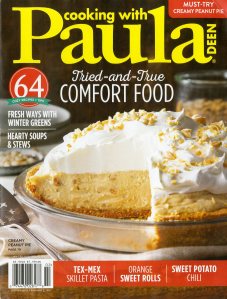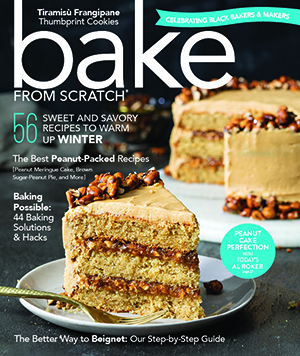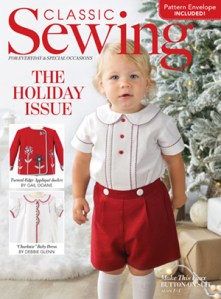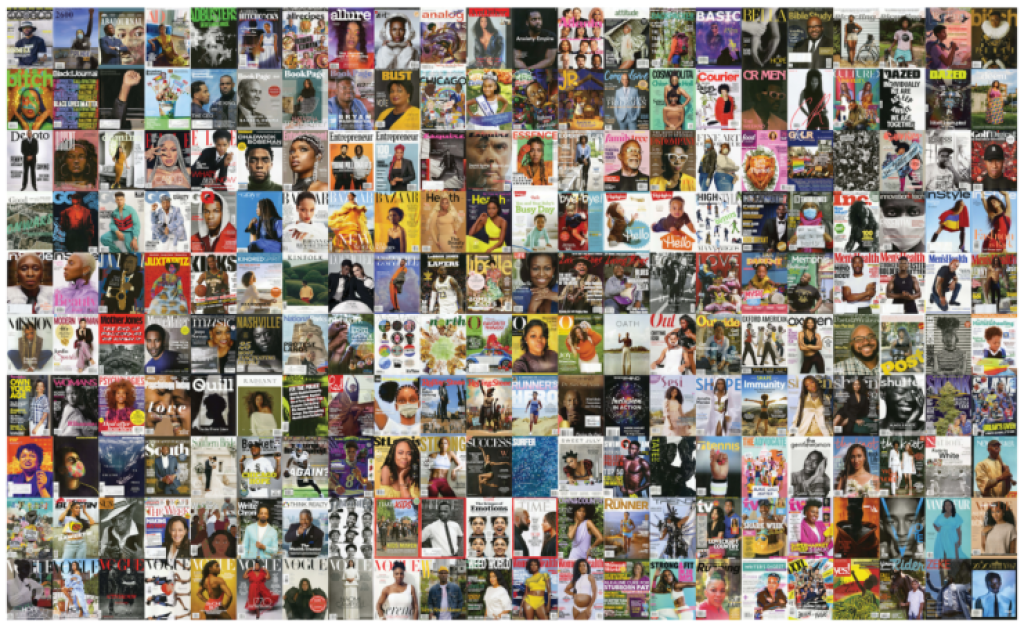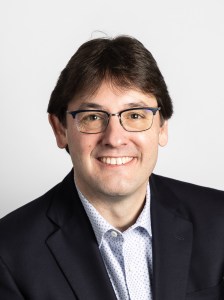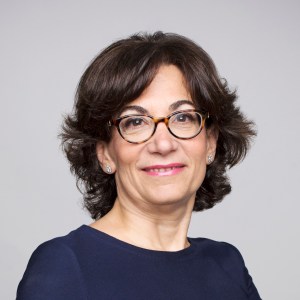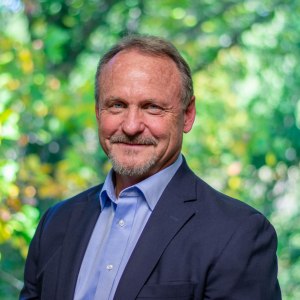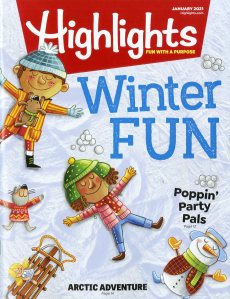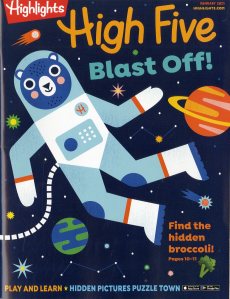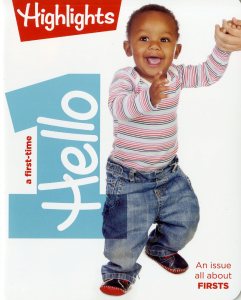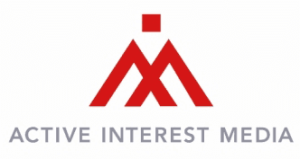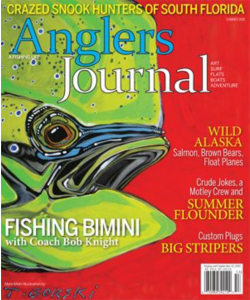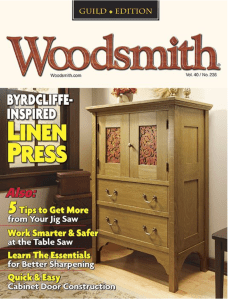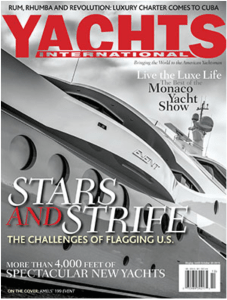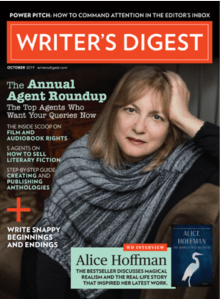“Magazine advertising and print publications are definitely going to be a part of our mix. Digital is definitely going to grow. It’s not one or the other, it’s both.”
“I think the weekly is now more of a story behind the story if people want to get a little more in depth on what’s going on. It’s also a great summary vehicle, especially on the celebrity and entertainment side of things.”
As I sit in front of my computer today, I have a very deep need to tell everyone how blessed I am. This interview with the inimitable Doug Olson is my first since having a massive heart attack and three stents placed in my heart’s arteries that really showed me how much I love my family, my life, and my work. While recovering, of which I am very thankful to God, I have been reflecting on what makes Mr. Magazine™ Mr. Magazine™, if you will. I have found that the love and care of my entire family is my number one possession in life. And the title of Mr. Magazine™ isn’t just a moniker. It’s also who I am. I’ve missed the words, pages, and smell of ink on paper. It’s in my blood and it’s who I am. And I am very thankful. I’ve missed you all.
And now Doug Olson.
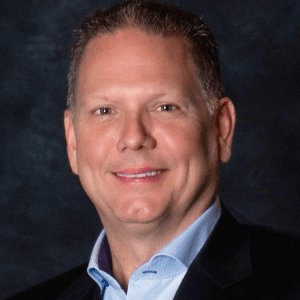
There is no doubt that Mr. Magazine™ loves interviewing magazine media people and Doug Olson definitely falls under that category. Prior to his role today as President & Chief Media Officer of a360media, the media division of accelerate360, he was President of the Magazine Division at Meredith Corporation, the leading multi-platform media company in the country. Throughout his career, he has held a variety of senior leadership positions in technology integration, strategic planning, and service delivery. In short, the man knows his way around magazines.
In this interview, we talk about magazines and magazine media, what he thinks they mean to the world today and where they’re headed in the future. He marvels at how successful bookazines have become and talks about the cultures that a360 is maintaining. It’s an informative discussion and I invite you to sit down, read and enjoy.
And now the complete interview with Doug Olson…
But first the soundbites:
On 2023, in terms of magazines and magazine media, especially for a360media: I think 2023 was a little bit more like 2022, input costs that went up are still there and are slowly starting to come down. I would say the consumer has held in there with us, both from a subscription standpoint and at newsstand.
On the amount of weeklies a360media has: Yes, we have a lot of weeklies and obviously that’s something that we’re constantly looking at. As long as the consumer holds in there with us we’ll continue to provide them and when the consumer shows signs that they don’t need a product anymore, we’ll make some changes.
On the role of a digital weekly in today’s digital age: I think the weekly is now more of a story behind the story if people want to get a little more in depth on what’s going on. It’s also a great summary vehicle, especially on the celebrity and entertainment side of things.
On the different companies they use to produce their bookazines: At the end of the day we want premium content. So we’ve gone to partners. People that have really good content in some of these genres. We think that they can do it at a very affordable price. And they like it because they get paid for their content and we like it because we know we have a better than average chance of it working out for us as well.

On whether bookazines are a reflection of American society: I believe that’s a true statement. If the consumer finds something that they’re really passionate about, what we call enthusiast brands or participation brands, something that they’re really into, they’re willing to pay their hard-earned money for it.
On whether bookazines will dominate a360 next year: In 2024, we’re probably going to reduce our number of releases and put more draw out on things that we think have a high probability of selling. And so would you rather have 500 that sell an average of X or would you rather have 400 that sell at a higher than X average.
On what his hope are for the women’s weekly magazines that a360 has: When you look at Woman’s World and First for Women, we think they have a tremendous upside. The digital properties of those are still relatively small. Both are two of the top-selling magazines in the country from a units and dollars perspective, with Woman’s World being the biggest. First for Women is 17 times per year, a tri-weekly, if you will. So we think they have a big opportunity.
On having ads in the bookazines: That’s really a content play there for the consumer, so you’re not going to see advertising, unless it’s really something special, within the pages of the magazine. Now the covers, especially Cover 4, is something that we have been talking with some of our marketing partners about and they’re really trying it. But it’s working out really well for them.
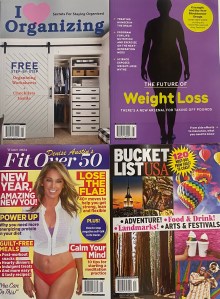
On the revenue split between print and digital at a360: Our traditional business is still larger than our digital business. But I will tell you that I believe we will have big growth in our digital business in 2024.
On being at a360 for two years now and whether it has been easy for him: Well, year one, as you know, is nothing but constant inputs going up, so that’s always fun when you’re a magazine-centric, newsstand-centric portfolio. And then year two has really been a lot of Google changes, a lot of Meta changes. As you’ve read, a lot of people’s digital business has kind of stalled out in 2023 and we were not immune to that.
On what he is most proud of accomplishing so far: I would say that the leadership team that we have now in this organization and all of the changes that we’ve made to the culture.
On the future of quarterly magazines with celebrity partnerships such as Drew with Drew Barrymore: I’m a big partnership guy and I love those types of collaborations. Better with Dr. Jen Ashton (now Dr. Jen Ashton magazine) was very successful right out of the gate. Drew has really gotten a lot of great momentum, not only in the advertising community, but with the consumer.
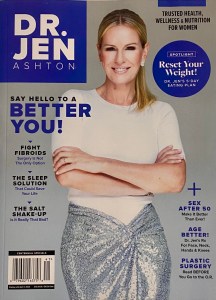
On whether he thinks there’s still room for print in this digital age: Yes, absolutely. There’s always room for print. It’s just smaller and you have to be smart about how you do it. And you have to go where the consumer wants to be. And that’s what we’re trying to do. I think the biggest difference in what we’re doing and others have done in the past is if something isn’t working, we’re willing to give up on it and pivot to something else.
On whether he ever compares his job at a360media to Meredith: Probably more than some of the people who work for me want to hear. (Laughs) There’s some great people who work now for Dotdash Meredith, people who made me very successful in that role for many years that I would do anything for. So I wish them nothing but success and I think it’s going to take all of us.
On the future of tabloids: I think the tabloids have a very loyal audience. And it’s really a newsstand play. The advertising that they get is more direct response. I think they’ve done quite well through some really difficult times in the economy.
On the trust factor in print: The one thing I always found fascinating, no matter what the person’s background was, they always felt like if they had their own magazine that was the ultimate badge of honor.
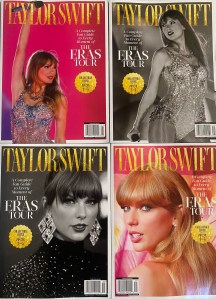
On anything he’d like to add: How did we possibly get through the last several months without Mr. Magazine and his trademark being a part of our lives? In all seriousness, we’re so glad you’re back. Many people have been praying for you. And we missed you.
On what keeps him up at night: The biggest thing that keeps me up at night is what is Google doing? Because all of us trying to build our digital business, keeping up with Google used to be tough. Now it’s a full time job.
And now the lightly edited transcript of the Mr. Magazine™ interview with Doug Olson, President & Chief Media Officer of a360media.

Samir Husni: How would you describe 2023, in terms of magazines and magazine media, especially for a360media?
Doug Olson: I think 2023 was a little bit more like 2022, input costs that went up are still there and are slowly starting to come down. I would say the consumer has held in there with us, both from a subscription standpoint and at newsstand.
The nice surprise for us was that print advertising has actually held up pretty well. I know there has been a lot of secular decline over the last 10 years in magazine advertising and we’ve had a good year there.
And our Specials business continues to grow. We’re doing really well there. I think we’re somewhere at the 35% or 36% of every single unit sold at the newsstand comes from a360 media and about 30% of every dollar spent, all of the revenue, comes from a360 media. So we’ve really done a lot of good work on the newsstand, especially with our Specials.
Samir Husni: And you’re still the only major magazine media company in the States that has nine weeklies?
Doug Olson: Yes, we have a lot of weeklies and obviously that’s something that we’re constantly looking at. As long as the consumer holds in there with us we’ll continue to provide them and when the consumer shows signs that they don’t need a product anymore, we’ll make some changes. We have made some changes in the last couple of years since I arrived here, but obviously we are keeping a close eye on everything.
Samir Husni: What’s the role of a print weekly in this digital age?
Doug Olson: I think the weekly is now more of a story behind the story if people want to get a little more in depth on what’s going on. It’s also a great summary vehicle, especially on the celebrity and entertainment side of things. It is hard to keep up with all of the news and who’s doing what and what releases are coming out and who’s starring in what television shows and what streaming services are available. So I think it’s a very good executive summary of what’s going on. But really the stories are more the stories behind the story. \
Samir Husni: You said your bookazines are exploding and yet when I look at them I see the rather large cover price. For example, the latest Taylor Swift with the collector’s poster was almost $18. And you’re also using so many different companies. I see Turnpike Media is doing some, Ten Media, Twenty-Two Media; can you explain how this works?
Doug Olson: That’s a great question and it’s by design. As you know from all the great work you’ve done in the industry, I’m a big believer in this bookazine format, the higher-priced, lower-frequency magazine, if you will. Our whole strategy is real simple: if we have owned and operated premium content, we will put bookazines out there under our owned and operated brands.
But really at the end of the day we want premium content. So we’ve gone to partners. People that have terrific content in some of these genres. We think that they can create it at a very affordable price. And they like it because they get paid for their content and we like it because we know we have a better than average chance of it working out for us.
But we take the risk. We take the risk on what the draw should be, where to distribute it, etc.? So it’s kind of a win/win. The content organizations get to be content houses and get paid for their great work and we do what we do and that’s take the risk and evaluate all of this.
Samir Husni: So it’s more like a freelance? You buy the content from them regardless of the situation?
Doug Olson: We have a couple of different business models, but we certainly have a pure- content house model where we’re just paying them to do content for us. And we also have some partners where they participate in the upside if there’s any profit. We’re very flexible on our approach to this and at the end of the day: if we think it can work for us and if it works for our partner, then we’re all in. So we’ve gone from a couple of hundred bookazines a few years ago to around 525 that we’ve put out this year in 2023.
Samir Husni: Bookazines are technically taking over the market. You have to search for a frequency-published publication anymore. We use to say that magazines were a reflection of American society, but today do you think it’s the bookazines that are the reflection?
Doug Olson: I believe that’s a true statement. If the consumer finds something that they’re really passionate about, what we call enthusiast brands or participation brands, something that they’re really into, they’re willing to pay their hard-earned money for it.
The trick now is this has all went down really from mass to niche and if you find the right niche… you know as well as I do that Taylor Swift and Barbie and some of these things in 2023 were absolutely on fire. We did way more around Barbie and Taylor Swift this year than we did around the Queen passing in 2022. We thought the Queen was a big event for the industry, but that was a rounding error compared to what Ms. Taylor Swift has done for the economy.
Samir Husni: I see you’ve brought out some big names. Are they in-house or are they freelancers? I know Bob Guccione Jr. did a Jesus magazine, he was the editor in chief, Steve Russell did a Cruise bookazine, Keith Blanchard is doing a lot of your own bookazines…are they all freelancers or something else?
Doug Olson: With our bookazines, we have a very small consumer revenue team that works on them. But almost everything else is either a partnership or freelance.
Samir Husni: It’s surprising to see all these titles; you said 525 this year?
Doug Olson: Yes.
Samir Husni: And if you add to that what Dotdash Meredith and Hearst is doing, bookazines are now the movers and shakers of the magazine industry. And you’re not only a publisher, but also a distributor. So I ask you, how do you see 2024 lining up? Do you see this trend continuing? Are we going to have 750 bookazines from you next year?
Doug Olson: It’s a portfolio play, right? Not everything you put out is going to be profitable. You hope that the majority of it is, but you never know, You get to a certain size and you are really only limited by display at retail. If you have enough display you can continue to put out a lot of product.
In 2024, we’re probably going to reduce our number of releases and put more draw out on things that we think have a high probability of selling. And so would you rather have 500 that sell an average of X or would you rather have 400 that sell at a higher than X average.
With input cost being so high, we also have something that we call our fast reprint strategy. It’s really a replenishment strategy. So if you and I come up with an idea and we decide to put a special out around beautiful photography in Mississippi and we put it out there and it sells really well right out of the gate, the first week or two, we’ll turn around and reprint it right away. Then replenish that if we need to, because on average these are mostly quarterlies, they tend to stay out around 80 to 90 days. So if we find something that looks like it’s going to be a hit with the consumer, then we want to do more of it.
Samir Husni: As I look at your portfolio, I see that you just brought Liz Vaccariello back to be editor in chief of Woman’s World and First for Women after Carol retired. You’re the only owner of women’s weeklies in this country, what’s your hope for these magazines?
Doug Olson: When you look at Woman’s World and First for Women, we think they have a tremendous upside. The digital properties of those are still relatively small. Both are two of the top-selling magazines in the country from a units and dollars perspective, with Woman’s World being the biggest. First for Women is 17 times per year, a tri-weekly, if you will.
That audience is quite different than where a lot of our competition is aimed. If you really look at the content of those magazines, it’s really mainstream women, that those products are aimed at; the C & D counties, the more rural areas, the Midwest, not big cities like some of the competition.
I have a lot of experience with the big city targets as well, but we really think that what we call the Women’s Lifestyle Group has a lot of upside so we brought Liz Vaccariello in and she’s honestly a hall of famer, if you will. With her EIC experience on Prevention, Reader’s Digest, Parents, Real Simple, and PEOPLE magazine; she has a ton of experience in this publishing world and a lot of success.
And we also brought in Cece Ryan, who was the publisher at PEOPLE magazine and before that the publisher at Real Simple and she’s going to lead our sales and marketing efforts. So we’re really throwing our shoulder into our Women’s Lifestyle Group because it serves the market really well already, but can serve it even better and be bigger and more important to our portfolio.
Samir Husni: I see some of the bookazines are now carrying a back page ad; is that going to be a change, in terms of starting to have advertising in the bookazines?
Doug Olson: That’s really a content play there for the consumer, so you’re not going to see advertising, unless it’s really something special, within the pages of the magazine. Now the covers, especially Cover 4, is something that we have been talking with some of our marketing partners about and they’re really trying it. But it’s working out really well for them.
You probably saw Skechers is on the back of several of our specials and bookazines… SAMIR HOLDS UP A BACK COVER OF ONE OF THE SIPS… yes, there it is on Martha Stewart. Skechers has been a great partner of ours and they continue to experiment with new things and I think it’s working out pretty well for them.
But we’re going to be really respectful. We know that when the consumer is paying that kind of money for a content product that they’re expecting a lot of content, so the advertising will be, at least at this point, really on the covers and we’ll try to make it relevant to why the person is buying it in the first place.
Samir Husni: Can you give me an idea what the split is in revenue between digital and print at a360media?
Doug Olson: Our traditional business is still larger than our digital business. But I will tell you that I believe we will have big growth in our digital business in 2024. And I would explain it to you this way: I’ve worked on some very large brands that had their fair share and it was really hard to figure out how you were going to get the next five percent out of some of those brands. They were so large and so successful to the advertising community. But we’re still working on getting our fair share.
When I came into the organization, I brought a lot of very accomplished leaders with me over the last couple of years. And we’re still trying to get our large chunk of “fair share.” So we’re not looking at three or four or five percent growth like everyone else is, we’re looking at how we can get 10, 15 or 20 percent growth. We still have a ways to go to get our fair share in the digital space. It’s definitely smaller than the traditional part of our magazine portfolio.
Samir Husni: You’ve been at a360 for almost two years now. Has it been a walk in a rose garden for you?
Doug Olson: Well, year one, as you know, was nothing but constant inputs going up, so that’s always fun when you’re a magazine-centric, newsstand-centric portfolio. Then year two has really been a lot of Google and Meta changes. As you’ve read, a lot of digital businesses have stalled out in 2023 and we were not immune to that.
But we feel like between the people we’ve brought in and the partnerships we’ve developed during the last six months that we’re really positioned well to get our fair share of the digital business. So you’ll see us talking a lot about our digital growth and at the same time, you also saw the growth in our bookazine side of the business has been substantial. And that made up for some of the erosion we’ve seen or secular decline we’ve seen on something like a weekly magazine.
Samir Husni: If you had to pick one thing that you’re proud of accomplishing during your two years at a360, what would that be?
Doug Olson: I would say that the leadership team that we have now in this organization and all of the changes that we’ve made to the culture. Obviously, you get measured as a leader in media today by your financial results. I think all of us are on the hot seat because it’s not a walk in the park, to use your words, to be in charge of these organizations. But we’ve held our own and we’ve put a team of leaders together here that are unbelievably talented and accomplished. I think the best for us is yet to come. We’re going to have an awesome 2024 and beyond.
I’m really excited for what they’ve done in a very short period of time. A lot of them have been here less than 10 or 11 months. They and their teams are so collaborative and there are a lot of really good people here. They just needed really good leadership and they now have that. So I’m most proud of the leadership team and all they have done on the softer side of the business as far as changing the culture and getting the people to collaborate and be on board for what we’re trying to do.
Samir Husni: And you were one of the few who launched a few quarterlies besides the bookazines this year, including Better with Dr. Jennifer Ashton, Drew from Drew Barrymore, what do you think the future is for those type magazines?
Doug Olson: I’m a big partnership guy and I love those types of collaborations. Better with Dr. Jen Ashton (Better is now called Dr. Jen Ashton magazine) was very successful right out of the gate. Drew has builtup a lot of great momentum, not only in the advertising community, but with the consumer. The subscriptions with that one are doing great. So we’ll see more of that. I think that’s all part of the mix in this portfolio play that we call bookazines.
Samir Husni: So you still believe there is room for print in this digital age?
Doug Olson: Yes, absolutely. There’s always room for print. It’s just smaller and you have to be smart about how you do it. And you have to go where the consumer wants to be. And that’s what we’re trying to do. I think the biggest difference in what we’re doing and others have done in the past is if something isn’t working, we’re willing to give up on it and pivot to something else.
I think a lot of the big publishers in the past have been really hesitant and by the time they made that decision it was too late. We have a lot of performance indicators that we keep track of. Magazine advertising and print publications are definitely going to be a part of our mix. Digital is definitely going to grow. It’s not one or the other, it’s both.
Samir Husni: Do you ever compare your job at a360media to Meredith?
Doug Olson: Probably more than some of the people who work for me want to hear. (Laughs) There are some great people who work for Dotdash Meredith, people who made me very successful in that role for many years that I would do anything for. So I wish them nothing but success and I think it’s going to take all of us in this industry to do our part. We can’t be fighting each other, we have to keep a united front to the industry so they see that magazines still matter. And they’re still a great base to feed other platforms from a content perspective.
They’re just so different. We had all of this digital traffic, all of this data, and all of these huge brands when I was at Meredith and they made some decisions about which ones they wanted to go forward and which ones they didn’t, obviously, now that they’re under Dotdash.
Now I have a different portfolio that has different needs and different wants, if you will. We’re going to try and get our fair share of digital, but at the same time we still think, especially in the bookazine genre, that the consumer is really interested in something that they’re passionate about. And we’re trying to serve them as best we can. So, two different ends of the spectrum. Meredith was very subscription-driven and this organization is much more newsstand-driven. But they both needed advertising. So there’s a lot of similarities, but they come at it from different perspectives. Great people in both organizations.
Samir Husni: Any future for the tabloids? Someone told me the tabloids were the digital of print.
Doug Olson: I think the tabloids have a very loyal audience. And it’s really a newsstand play. The advertising that they get is more direct response. I think they’ve done quite well through some really difficult times in the economy. I’m not the expert in the tabloid business, but I can tell you that I have a lot of respect for the people who work on those titles. And they have a very loyal audience, so for the foreseeable future, they’re doing just fine.
Samir Husni: Any comment on the trust factor in print?
Doug Olson: I think I’ve told you this before when we’ve talked, but getting back to the partnership part of the bookazine business, I have always been fascinated. We had a lot of partners that had very successful television shows or other venues when I was at Meredith, someone like Martha Stewart.
But the one thing I always found fascinating, no matter what the person’s background was, they always felt like if they had their own magazine that was the ultimate badge of honor. With Joanna Gaines, I think she is most proud of her magazine The Magnolia Journal. At least, when I was there she said that all of the time. And if celebrities had something with their name on it, there was just something special about that.
I’m a big fan of magazines. We’ve all had to pivot. I don’t think the mass thing is a great idea. I wouldn’t launch a magazine that’s aimed at the masses in 2024. But if you find something 100,000 here or 200,000 there and do something really well, they’ll support it. And advertisers will come as you put together these audiences. It’s just a different way of doing it. You just have to be really patient and selective and put out premium content that the consumer is willing to spend their money on.
Samir Husni: Is there anything you’d like to add?
Doug Olson: How did we possibly get through the last several months without Mr. Magazine™ and his trademark being a part of our lives? In all seriousness, we’re so glad you’re back. Many people have been praying for you. And we missed you. We missed someone in the industry that still believes in it and still organizes all of us. I couldn’t be happier to be your first interviewee on your comeback. And I’m super glad that you’re back on the job.
Samir Husni: Thank you. I really appreciate that.
Samir Husni: My typical last question, what keeps you up at night?
Doug Olson: The biggest thing that keeps me up at night is what is Google doing? Because all of us trying to build our digital business, keeping up with Google used to be tough. Now it’s a full time job. You have to make sure that your team out in the field knows exactly what they’re doing because everyone is looking for partners, brand safety and everything else, it’s become the number one thing. Keeping up with your digital business is keeping up with Google.
Samir Husni: Thank you. Season’s Greetings and the best of the New Year. Below is a picture I took of a Blue jay celebrating the season. See you in 2024.
